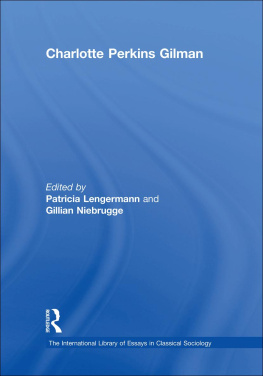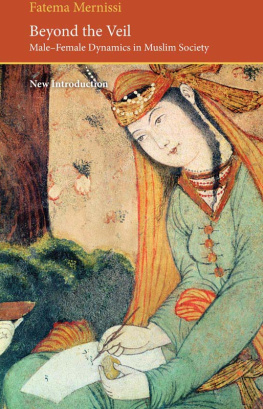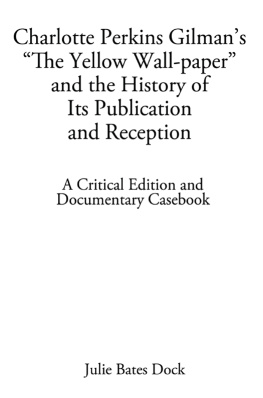Charlotte Perkins Gilman - Herland
Here you can read online Charlotte Perkins Gilman - Herland full text of the book (entire story) in english for free. Download pdf and epub, get meaning, cover and reviews about this ebook. year: 1979, publisher: Pantheon, genre: Romance novel. Description of the work, (preface) as well as reviews are available. Best literature library LitArk.com created for fans of good reading and offers a wide selection of genres:
Romance novel
Science fiction
Adventure
Detective
Science
History
Home and family
Prose
Art
Politics
Computer
Non-fiction
Religion
Business
Children
Humor
Choose a favorite category and find really read worthwhile books. Enjoy immersion in the world of imagination, feel the emotions of the characters or learn something new for yourself, make an fascinating discovery.

- Book:Herland
- Author:
- Publisher:Pantheon
- Genre:
- Year:1979
- Rating:4 / 5
- Favourites:Add to favourites
- Your mark:
- 80
- 1
- 2
- 3
- 4
- 5
Herland: summary, description and annotation
We offer to read an annotation, description, summary or preface (depends on what the author of the book "Herland" wrote himself). If you haven't found the necessary information about the book — write in the comments, we will try to find it.
Charlotte Perkins Gilman: author's other books
Who wrote Herland? Find out the surname, the name of the author of the book and a list of all author's works by series.
Herland — read online for free the complete book (whole text) full work
Below is the text of the book, divided by pages. System saving the place of the last page read, allows you to conveniently read the book "Herland" online for free, without having to search again every time where you left off. Put a bookmark, and you can go to the page where you finished reading at any time.
Font size:
Interval:
Bookmark:
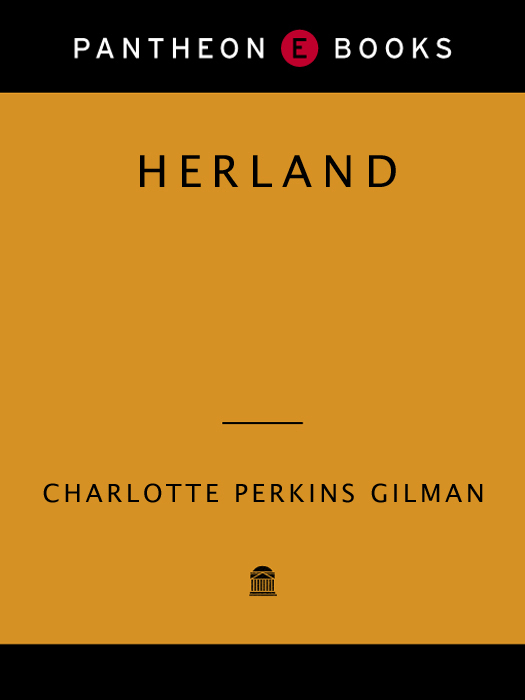
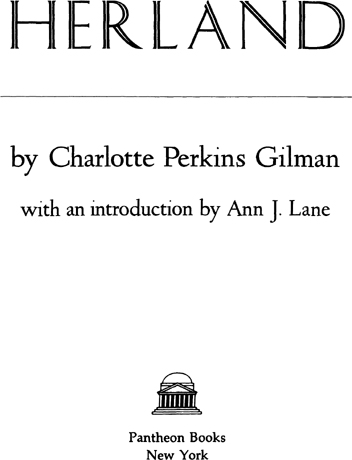
Charlotte Perkins Gilman is not ordinarily thought of as a humorist, but her feminist utopia, Herland, is a very funny book. Prominent at the turn of the century as a social critic and lecturer, Gilman was best known as the author of Women and Economics, a serious and sweeping analysis of the history, sociology, and political economy of the female sex; and The Yellow Wallpaper, a chilling and largely autobiographical study of insanity. But much of her fiction, the least known of her work, relies on humor for its social commentary. Ideologuesand Gilman was one of the bestrarely can establish sufficient distance between themselves and their cause to laugh and make others laugh with them. The womens movement is only now coming to recognize the power of humor as a device for social criticism, a power which, as with Gilman, is located essentially in imaginative work. Gilman appealed to an assortment of our comic sensibilitiesthe satiric, the whimsical, the sardonic, the rousing belly laughall in the interest of exposing the absurdities of accepted pieties, particularly as they applied to womans eternal place or eternal nature. She used the marginality forced upon her as a woman in Victorian America to shape a distinctly womans humor. Herland is an example of Gilmans playful best.
What makes Gilmans skill even more special is the facility with which she moved back and forth from humor to serious social and historical analysis, and the setting in which Herland appeared well illustrates her virtuosity. Written in 1915, Herland was serialized in Gilmans monthly magazine, The Forerunner; and until now it was never published separately. The Forerunner appeared each month from November 1909 through December 1916, beginning with no capital except a mental one, and ending when Gilman decided that she had said what she had wanted to. She wrote every line of the thirty-two-page magazine, including the few advertisements she tolerated for a short while. Moores Fountain Pen and Fels-Naphtha Soap were personally endorsed, the first because it did not leak when one bent over to wash floors or change diapers, the second because it was artistically and antiseptically clean and a solid comfort in her kitchen. Each year two books were serialized; the full seven-year run of The Forerunner equaled in pages twenty-eight full-length books.
Every issue contained editorials, critical articles, comments and observations, book reviews, essays, poetry, and fiction that dealt with a whole range of subjects from venereal disease to noise pollution, but the overriding commitments were to the rights of women and to socialism. Writing in the years when the womens movement and the socialist movement were each trying to win mass support, Gilman sought to unite them by demonstrating their essential and necessary interdependence. Her impudent and heretical pieces, unacceptable to professional journals or popular magazines, flourished in The Forerunner. Herland cannot be described as a typical selection, for no one selection can be; but it characterizes the spirit and style of Gilman during this period.

Charlotte Anna Perkins was born in Hartford, Connecticut, on July 3, 1860. Her father, Frederic Beecher Perkins, a man of letters and one-time head of the Boston Public Library, was the grandson of the distinguished theologian Lyman Beecher, and nephew of Henry Ward Beecher and Harriet Beecher Stowe. Perkins left his wife, Mary A. Fitch, soon after Charlottes birth, and thereafter provided his family with little support, emotional or financial. Charlotte and her brother grew up in an unhappy, cheerless home. Mother and children lived on the edge of poverty, moving nineteen times in eighteeen years to fourteen different cities.
As a young woman still living at home, Charlotte Perkins supported herself as a designer of greeting cards, an art teacher, and a governess. In 1884, after much vacillation, she reluctantly married Charles Walter Stetson, a local artist. Katharine Beecher, their only child, was born a year later. Soon after, Charlotte Stetson became so deeply depressed and despondent that she consulted S. Weir Mitchell, the well-known Philadelphia neurologist who specialized in womens nervous disorders. Mitchells famous rest cure forbade Charlotte Stetson ever to write and sharply limited her reading time. The treatment almost drove her mad. She ultimately rejected his regimen, as she was all her life to reject expert advice, and fled to California, away from husband and child. There the depression lifted. When efforts to reconcile with her husband failed, she moved permanently to California with her daughter. She and Stetson later divorced. He immediately married Grace Ellery Channing, Charlotte Stetsons closest friend, and the three remained good friends throughout their lives.
For a time Charlotte Stetson barely managed to support herself, Katharine, and later her mother, by running a boarding-house. During these difficult years she launched her writing and lecturing career. In 1892 The Yellow Wallpaper appeared, a bitter story of a young woman driven to insanity by a loving husband-doctor, who, with the purest motives, imposed Mitchells rest cure. It was Charlotte Stetsons retaliation for the damage done to her and others by the powerful psychiatric profession and might be placed in the tradition of black comedy, although its comic quality has not previously been acknowledged. The Yellow Wallpaper reflects a woman in torment, Herland a woman at play. The caged creature in the first achieves her freedom, and thereby her sanity, in the second.
In 1893 she published a book of verse, In This Our World. In 1894 she edited, with Helen Campbell, The Impress, a journal of the Pacific Coast Womans Association. She was contributing editor to The American Fabian, along with Henry Demarest Lloyd, Edward Bellamy, and William Dean Howells, who did much to sustain her career. Bellamys novel Looking Backward pictured the world in the year 2000 under a form of Utopian socialismwhich he called Nationalismand inspired the formation of Nationalist clubs to implement the ideas espoused in the book. Charlotte Stetson found herself drawn to the ideas of Edward Bellamy and the Nationalist movement, as well as caught up in the womens movement.
She earned her living by lecturing to womens clubs and mens clubs, to labor unions and suffrage groups, to church congregations and to these Nationalist clubs. Like the Beechers from whom she came, she was a preacher, but the message was uniquely hers.
Soon after Walter Stetson remarried, both parents agreed that their child should live with her father and his new wife, whom the child knew and loved. Charlotte Stetson, by this time moderately well known, was attacked in the press, particularly in California, for abandoning her child and for being an unnatural mother. Unnerved, she fled her home. From 1895 until 1900, she led a nomadic existence, ceaselessly lecturing and writing, forging for herself a role as ideologue and propagandist, a humanist-at-large. Here is a woman in late-Victorian America, denying the social definition of herself as wife and mother, first with a scandalous divorce (scandalous because it was amicable and seemingly without cause), then by abandoning her child to its father, and finally by denying the very reality of home. She created a kind of self-imposed exile, reproducing, but this time by choice, the marginality of her early life.
Font size:
Interval:
Bookmark:
Similar books «Herland»
Look at similar books to Herland. We have selected literature similar in name and meaning in the hope of providing readers with more options to find new, interesting, not yet read works.
Discussion, reviews of the book Herland and just readers' own opinions. Leave your comments, write what you think about the work, its meaning or the main characters. Specify what exactly you liked and what you didn't like, and why you think so.

